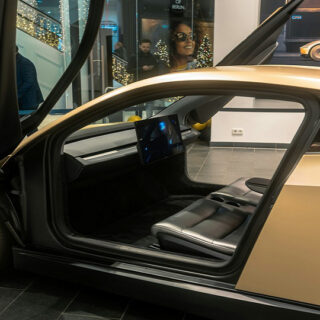In the past year, the global car market as a whole sank: cars began to be bought less.
But there is a notable exception. According to DIGITIMES research, annual sales of EVs reached 9.78 million units in 2022, which means an annual growth rate of 49%!
14 million EVs are expected to be sold in 2023, including 9 million EVs in China. Steep growth will continue.
Decarbonization plans in developed and catching-up countries aim to stop the sale of cars with internal combustion engines and stimulate the production of electric vehicles.
The share of “running” electric vehicles in the entire fleet will exceed 30% in 2025, and the average share in production will be more than 45% from 2021 to 2025.
It is important that electrification does not put forward a new protagonist.
The U.S. and Europe have traditionally dominated the automotive industry, but the move to electric vehicles gives China the chance to take the lead in this market of the future.
According to DIGITIMES Research: China’s share of global electric vehicle sales is already over 60%, making it the leading market; followed by Europe and the US with market shares of 24% and 9% respectively.
China has become the world’s largest market for electric vehicles thanks to government support for manufacturers. The consumption of electric vehicles in rural areas is stimulated, tax incentives are multiplied and more than 20 subsidies from local authorities for the purchase of electric vehicles by citizens.
And not least: China has the highest density of charging stations among all countries.
The Chinese electric vehicle industry has a global market share of more than 50% in key product segments such as battery raw materials, final assembly, and charging infrastructure. Therefore, the export of EM from China is stably competitive in terms of price. What even Elon Musk especially appreciates.
Among the main components of an electric car, the battery accounts for 30-35% of the cost. China still holds the lion’s share of this market. Including due to the status of the largest supplier and processor of rare earth metals. Plus ecology: China holds 80% of the world’s share in battery recycling.
Europe is the second largest market for electric vehicles. So far, mainly due to the growth of import sales and local production of Chinese brands. From battery plants to assembly plants, European automakers rely heavily on investment and supply from China and its involvement in local supply chains.
The US, after Europe, is the third largest market for electric vehicles in the world. However, with the exception of Tesla from Elon Musk, there are no American companies that master battery technology and can produce highly scalable EVs.
In addition, the United States has firmly embarked on the path of a hybrid war with China. Therefore, it is much easier for South Korean companies to set up factories in the United States. In the future, South Korean manufacturers are expected to account for more than 60% of the battery capacity that will be built in North America.
Well, in general, as Ostap Bender from “12 chairs”would say, — ELECTRIC HORSE GOING TO REPLACE PETROL HORSE!





